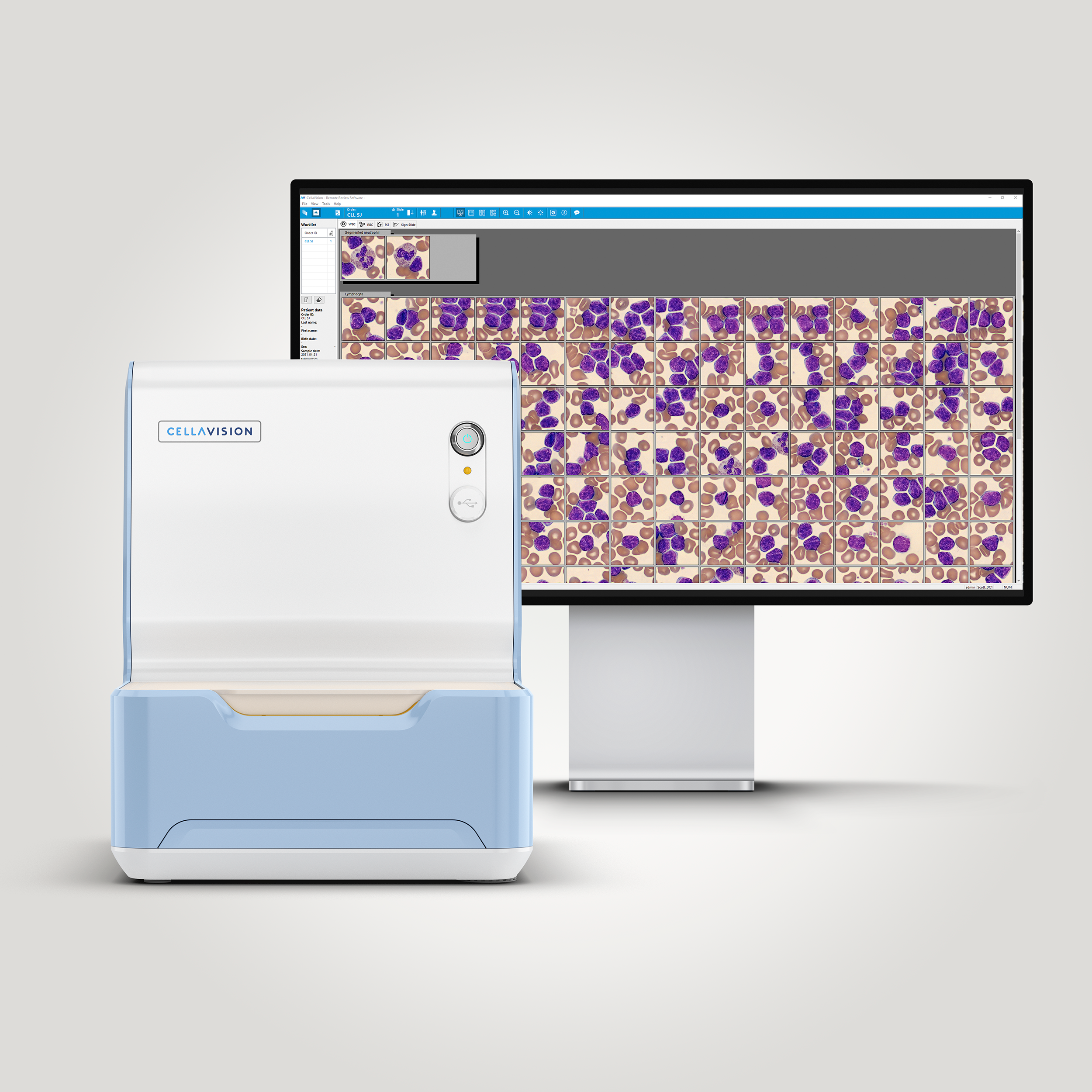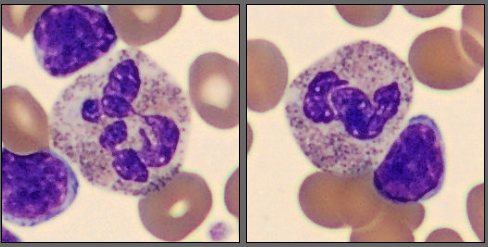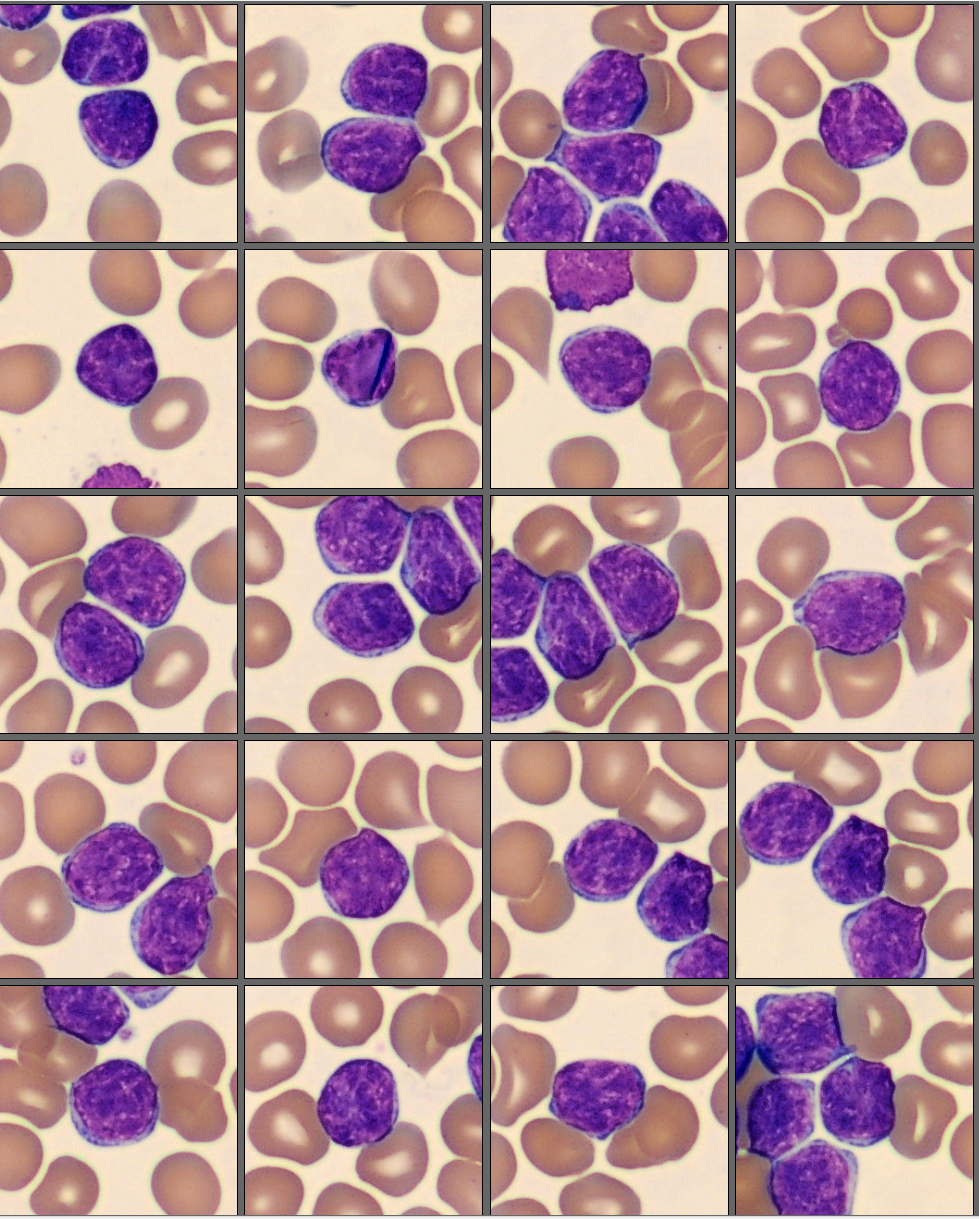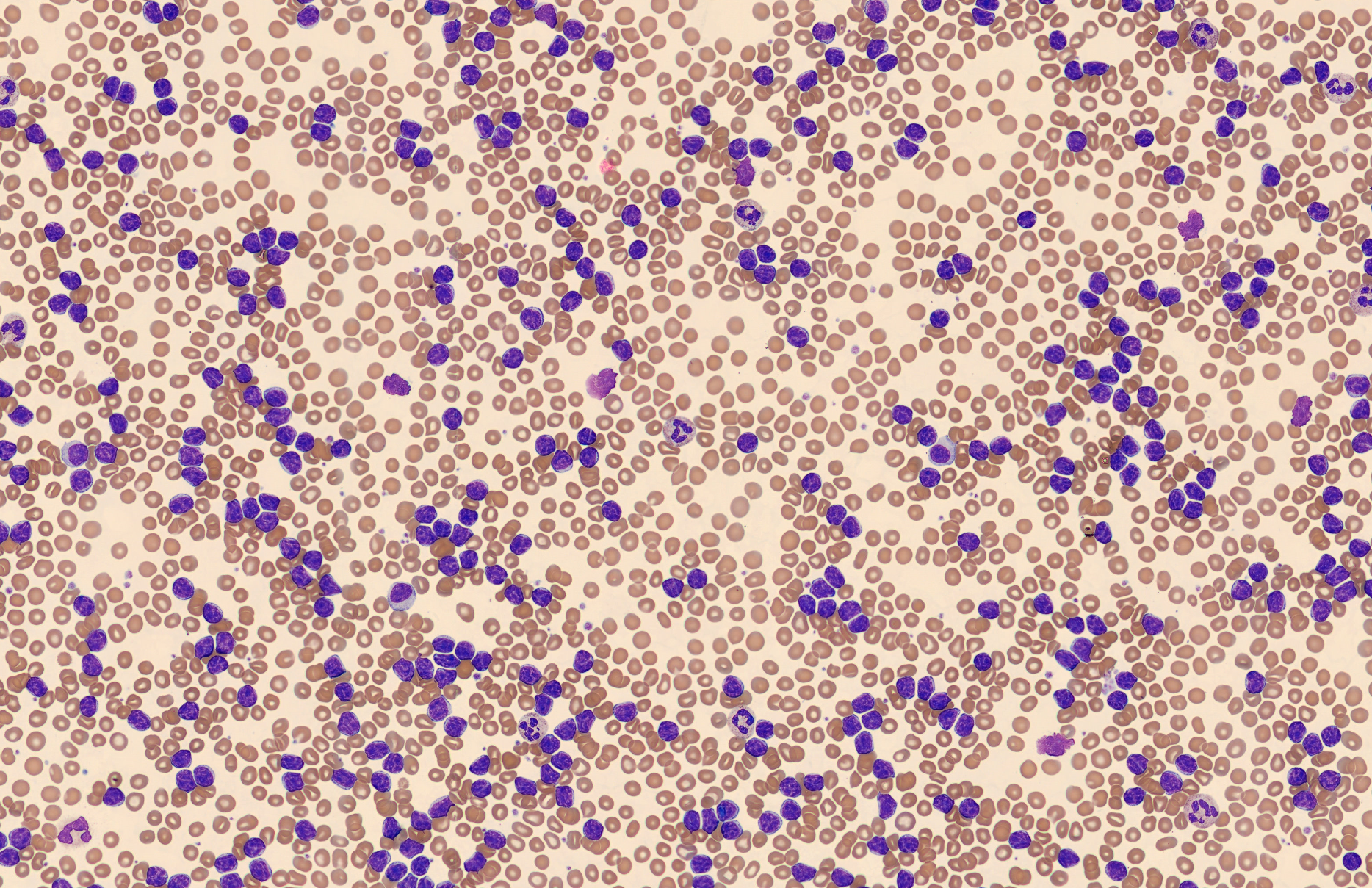Monthly Cell Challenge #5 / 2025

Lymphocyte explosion
Description:
A 78-year-old man went for his yearly check-up at his general physician. Lately, he had some trouble with tiredness and recurrent infections but had not thought much about it.
A blood count was ordered, and the result showed a significant deviation.
CBC results:
| Test | Result | Units |
|---|---|---|
| WBC | 400 | x109/L |
| Hemoglobin | 126 | g/L |
| MCV | 92 | fL |
| PLT | 202 | x109/L |
The cell counter flagged for Blast/Abnormal Lymphocytes.
Due to the WBC count, a blood smear was made and stained with Wright –Giemsa stain and scanned on a CellaVision® DC-1 analyzer.
Smear review on CellaVision® DC-1:
| WBC Differential | % | x109/L |
|---|---|---|
| Neutrophils | 2 | 8 |
| Lymphocytes | 98 | 392 |
| Smudge cells | 4 | 4 |
On the CellaVision® Remote Review Software, the MedTech could see a few neutrophils and a large number of lymphocytes. The lymphocytes were small with clumped chromatin, some with an indistinct nucleolus and with scant, slightly basophilic cytoplasm.



To follow up, flow cytometry was ordered.
Flow cytometry data: CD5+, CD10-, CD19+, CD23+, CD25-, IgM dim+, CD38+
Diagnosis:
Chronic lymphocytic leukemia, CLL
Discussion:
Chronic lymphocytic leukemia (CLL) is a chronic condition characterized by accumulation of mature small B cells. It often starts asymptomatically and can be found incidentally during a routine blood count. Symptoms can be anemia, recurrent infections, lymphadenopathy, fatigue and unplanned weight loss. [1][2]
CLL typically develops very slowly. A patient can live a long time with CLL before noticing any symptoms. The National Cancer Institute estimates that about 87.9% of people with CLL are alive five years after diagnosis. [3] There is no known treatment, but there are ways to slow down the progression with for example, chemotherapy, targeted therapy and immunotherapy. [3]
The WBC and lymphocyte count can be greatly elevated or just above normal range. The lymphocytes are usually normal in size but often appear more uniform, with clumped chromatin in the nucleus and with scant, slightly basophilic cytoplasm. [2]
CLL cells are often more mechanically fragile and often show a high number of smudge cells on a wedge smear, which is not seen in this patient. Studies have shown that patients with a higher number of smudge cells in peripheral blood wedge preparations show less aggressive disease and a longer survival rate. [4][5] One study showed that the 10-year survival rate was 50% for patients with 30% or less smudge cells compared with 80% for patients with more than 30% of smudge cells. [4]
References:
[1] Naresh, KN, et. al. Chronic lymphocytic leukaemia/small lymphocytic lymphoma. In: WHO Classification of Tumors series, 5th ed.; vol 11, IARC publications, https://publications.Iarc.who.int/637. 2024. p. 368-377.
[2] Bain, Barbara J., (2015) Blood Cells, A Practical Guide (5th edition), John Wiley & Sons Ltd, p. 461-464; ISBN: 978-1-118-81733-9
[3] Chronic Lymphocytic Leukemia (CLL), Cleveland Clinic, (2023) https://my.clevelandclinic.org/health/diseases/6210-chronic-lymphocytic… , Accessed 2025-05-13
[4] Nowakowski, G.S, et al. Percentage of Smudge Cells on Routine Blood Smear Predicts Survival in Chronic Lymphocytic Leukemia, Journal of Clinical Oncology, Volume 27, Number 11, https://doi.org/10.1200/JCO.2008.17.0795
[5] Marionneaux, S.M, et al. Smudge Cells in Chronic Lymphocytic Leukemia: Pathophysiology, Laboratory Considerations, and Clinical Significance, Laboratory Medicine 2021;52:426-438, DOI: 10.1093/labmed/lmaa119